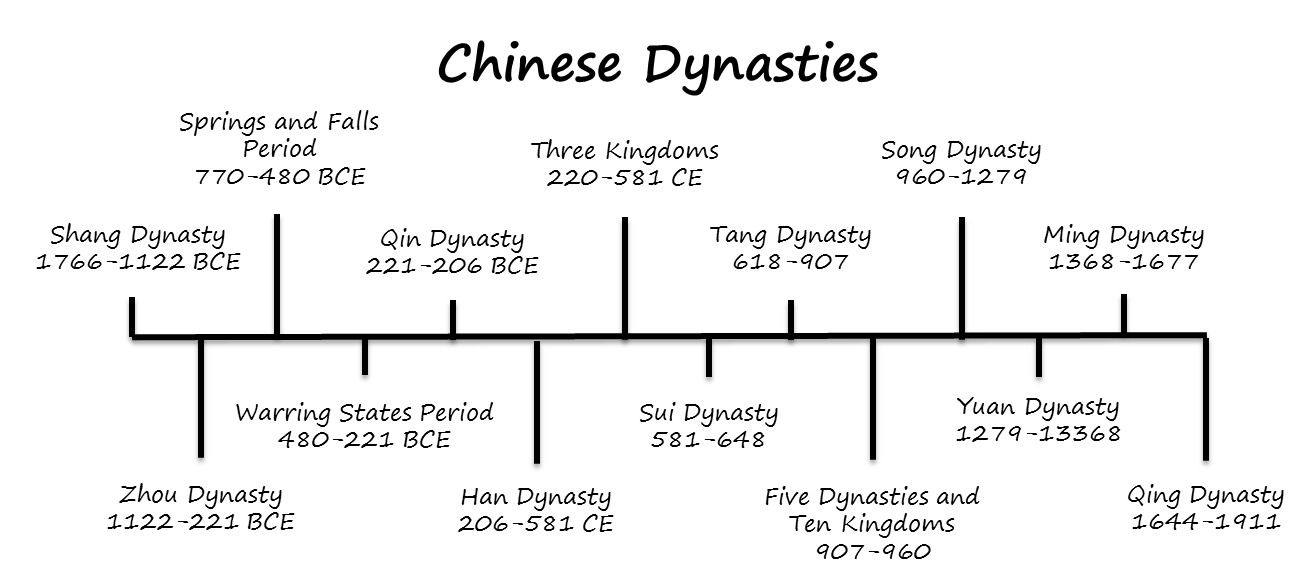Language/Mandarin-chinese/Culture/China-Timeline
China has a rich and complex history spanning over 5,000 years, with numerous dynasties that rose and fell throughout its long history. Each dynasty brought its own unique contributions and challenges to Chinese society, leaving a lasting legacy that still influences modern China today.
In this article, we will explore the chronology of Chinese dynasties, starting from the earliest known dynasty, the Xia Dynasty, to the last imperial dynasty, the Qing Dynasty. We will examine the significant events, rulers, and cultural achievements of each dynasty, highlighting their impact on Chinese civilization and the world.
From the grandeur of the Han Dynasty to the artistic achievements of the Tang Dynasty, and the innovations of the Song Dynasty, this chronology will provide a comprehensive overview of the diverse and fascinating history of China's dynasties. So, join us as we embark on a journey through time, and explore the rich tapestry of China's dynastic history.
Take a moment to explore these relevant pages as you conclude this lesson: Internet resources for learning Mandarin ..., Kung Fu, Chinese New Year & Dragon Boat Festival and Zongzi.
Chronology of Chinese dynasties[edit | edit source]
This table provides a chronological overview of the major Chinese dynasties and periods, spanning from the Xia Dynasty (2070-1600 BCE) to the People's Republic of China (established in 1949). Each row represents a different dynasty or period, and includes the period of time it was in power or in existence. The table also includes the Western and Eastern Zhou Dynasties, which ruled during the period of 1046-771 BCE and 770-25 BCE, respectively. Additionally, the table provides information on significant periods such as the Spring and Autumn period, and the Warring States period. By organizing the information in a clear and concise manner, the table allows the reader to easily follow the sequence of events and understand the transitions of power throughout Chinese history.
| Dynasty | Period | Description |
|---|---|---|
| Xia Dynasty | - 2070 to - 1600 | The first dynasty in traditional Chinese history, known mainly through legend and archaeological discoveries. |
| Shang Dynasty | - 1600 to - 1046 | The first dynasty with recorded history in China, known for its bronze metallurgy and oracle bone inscriptions. |
| Zhou Dynasty (Zhou of the West, Zhou of the East) | - 1046 to - 25, - 1046 to - 771, - 770 to - 25 | One of the longest-lasting dynasties, known for its feudal system, iron metallurgy, and philosophical schools such as Confucianism and Taoism. |
| Spring and Autumn period | - 770 to - 476 | A period of political fragmentation and cultural innovation, marked by the rise of regional states and the flourishing of philosophy, literature, and art. |
| Warring States period | - 475 to - 221 | A period of intense warfare and political competition among seven major states, which eventually led to the unification of China under the Qin Dynasty. |
| Qin Dynasty | - 221 to - 206 | The first dynasty to unify China and establish a centralized bureaucratic government, known for its legalism and construction of the Great Wall. |
| Western Han Dynasty, Usurpation of Wang Mang | - 206 to - 9, 9 to 24 | A period of political stability and cultural achievements, marked by the development of silk road trade, Confucianism, and literature. |
| Eastern Han | 24 to 220 | A period of relative peace and prosperity, marked by the expansion of Chinese territory, the emergence of Buddhism, and the invention of paper. |
| Three Kingdoms | 220 to 265 | A period of political fragmentation and military conflicts among three major states, which laid the foundation for later cultural and artistic achievements. |
| Jin Dynasty (Jin of the West, Jin of the East) | 265 to 316, 317 to 420 | A period of political and cultural diversity, marked by the rise of nomadic regimes and the flourishing of Buddhism, Daoism, and literature. |
| Northern Wei Dynasty | 386 to 534 | A period of cultural exchange and religious syncretism, marked by the introduction of Buddhism, the creation of cave temples, and the development of calligraphy. |
| Northern and Southern Dynasties | 420 to 589 | A period of political division and cultural diversity, marked by the coexistence of multiple states and the emergence of regional styles in art, literature, and music. |
| Sui Dynasty | 589 to 618 | A short-lived dynasty that reunified China and laid the foundation for the Tang Dynasty, known for its military conquests, legal reforms, and construction of the Grand Canal. |
| Tang Dynasty | 618 to 907 | A golden age of Chinese civilization, marked by the expansion of Chinese influence, the integration of diverse cultures, and the flourishing of poetry, painting, and science. |
| Five Dynasties | 907 to 960 | A period of political chaos and cultural revival, marked by the emergence of regional states and the revival of Confucianism, Buddhism, and Daoism. |
| Northern Song Dynasty, Southern Song Dynasty | 960 to 1279, 960 to 1127, 1127 to 1279 | A period of cultural efflorescence |
World Timelines[edit source]
Other Lessons[edit | edit source]
- Chronology of Historical Events in China
- History
- Why Learn Chinese Mandarin
- Internet resources for learning Mandarin Chinese
- Translations of Skyrim
- Kung Fu
- Chinese New Year


